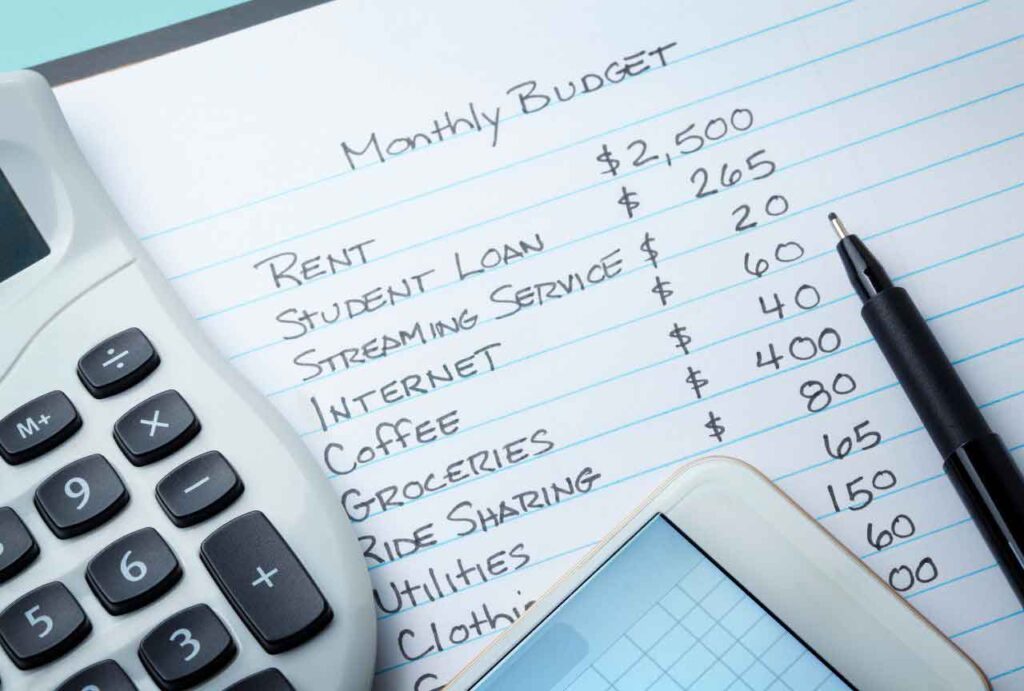Financial security. It’s a phrase that carries immense weight, it represents both confidence in meeting today’s commitments and freedom to pursue tomorrow’s goals. Yet for many, gaining command over finances remains elusive. High costs, irregular income, and unexpected demands combine to create uncertainty. The good news is, with the right budgeting approach you can have a bit clarity and direction and navigating your finances doesn’t have to be an odyssey.
This article introduces you to four popular and effective budgeting strategies that can empower you to take charge of your spending. We’ll explore the mechanics of each method, highlight their strengths, and discuss how they can be tailored to your unique financial situation.
Eye-opening 2025 savings & financial resilience statistics
Before exploring the budgeting strategies, it’s important to understand why smart money management is more crucial than ever. Recent 2025 data reveals how fragile many households’ financial situations remain:
- 1 in 3 Americans couldn’t cover one month’s bills. About one-third of U.S. households said they could not cover their bills for even one month if they lost their income . A figure that rises to 38 % among Gen Z and 41 % among millennials. (Source: Bankrate 2025 Emergency Savings Report)
- Only 46 % of adults say they have enough emergency savings to cover three months of expenses, while 24 % report having none at all. (Source: Bankrate, 2025)
- 59 % of Americans do not have enough funds to cover an unexpected $1,000 expense. (Source: CBS News, 2025)
- 57 % of adults now say paying regular bills is their biggest financial concern—surpassing inflation and debt. (Source: Nasdaq, 2025)
- A 2025 report found that 33 % of respondents would run out of money within a month if their primary income stopped. (Source: Yahoo Finance, 2025)
These figures underscore how common it is for people to lack a financial buffer, making structured budgeting strategies all the more important.

1. The 50/30/20 Rule: A Simple and Effective Budgeting Framework
The 50/30/20 rule is a widely popular budgeting strategy that offers a straightforward approach to allocating your income. Here’s a breakdown of each category and its purpose:
50% Needs:
This category encompasses the essential expenses that form the foundation of your monthly living costs. These are non-negotiable items you need to survive and function comfortably. Common examples include:
- Rent or mortgage payments
- Utilities (electricity, water, gas)
- Groceries
- Minimum debt payments (credit card minimums, student loan minimums)
- Transportation costs (car payments, gas, public transportation)
- Minimum insurance payments (health, car)
Why 50%?: This percentage acknowledges that basic needs typically constitute a significant portion of most people’s income. Allocating half your income ensures these essential expenses are covered first.
30% Wants:
This category represents your discretionary spending, often referred to as “fun money.” It’s allocated towards expenses that enhance your lifestyle but aren’t essential for survival. Examples include:
- Entertainment (dining out, movies, concerts)
- Hobbies and activities (gym memberships, sports equipment)
- Shopping (clothes, electronics)
- Subscriptions (streaming services, magazines)
- Travel and vacations
Why 30%?: This percentage allows you to enjoy life’s pleasures and prioritize personal well-being. It’s important to have a designated amount for discretionary spending to avoid feeling deprived.
20% Savings:
This crucial category is dedicated to building your financial future. It’s the portion you allocate towards achieving your financial goals, such as:
- Emergency fund (3-6 months of living expenses to cover unexpected costs)
- Retirement savings (investments for your long-term financial security)
- Down payment on a car or house
- Educational savings goals
Why 20%?: Consistently saving 20% allows you to build a solid financial foundation and work towards long-term financial security. This percentage is a good starting point, you can adjust it based on your specific goals and debt situation.
The Benefits of the 50/30/20 Rule:
- Simplicity: It’s an easy-to-understand framework that anyone can implement.
- Balance: It encourages balanced allocation between needs, wants, and savings.
- Flexibility: While percentages are provided, you can adjust them slightly to suit your circumstances (e.g., higher debt payments may require a temporary decrease in the “wants” category).
Drawbacks to Consider:
- May not be suitable for everyone: Individuals with significant debt payments or irregular income might need to adjust the percentages.
- Doesn’t account for individual circumstances: It’s a general guideline, and specific expenses may vary depending on your location and lifestyle.

Also Read: 10 Jobs That Keep Up With Inflation
2. Zero-Based Budgeting: A Method for Meticulous Money Management
Zero-based budgeting (ZBB) takes a detailed and hands-on approach to financial planning. Unlike the 50/30/20 rule, which allocates percentages to broad categories, ZBB requires assigning every dollar of your income a specific purpose. Here’s a closer look at how it works:
The ZBB Process:
- Gather Your Information: List all your income sources for a specific budgeting period (typically monthly).
- Identify Expenses: Create a comprehensive list of all your potential expenses, including fixed costs (rent, utilities) and variable costs (groceries, entertainment).
- Categorize Expenses: Group your expenses into categories (housing, food, transportation, etc.) for better organization.
- Assign Every Dollar: Allocate a specific amount to each expense category based on your needs and financial goals. The key principle is to ensure the total allocated amount for expenses equals your total income.
- Review and Revise: Regularly monitor your spending and adjust your allocations as needed. If there’s a surplus in a category, consider directing those funds towards savings goals or debt reduction.
Benefits of Zero-Based Budgeting:
- Promotes Financial Awareness: ZBB compels you to analyze every expense, fostering a deep understanding of your spending habits.
- Encourages Prioritization: By assigning every dollar a purpose, you prioritize needs and identify areas for potential cuts.
- Reduces Wasteful Spending: The detailed approach discourages unnecessary spending and ensures your money is directed towards your goals.
Drawbacks to Consider:
- Time-Consuming: Setting up and maintaining a zero-based budget can be quite time-consuming, especially for those with complex finances.
- Requires Discipline: Sticking to the allocated amounts requires ongoing monitoring and adjustments, which demands discipline.
- Less Flexible: ZBB may not be ideal for individuals with unpredictable income or frequent changes in spending patterns.
Who Should Consider ZBB?
- Individuals seeking greater control over their finances
- Those with specific financial goals (saving for a down payment, paying off debt)
- People who struggle with impulse spending

Also Read: 15 Best Budgeting Tips For Young Adults
3. Envelope Budgeting: A Tactile Approach to Managing Cash Flow
The envelope budget is a traditional, cash-based budgeting method that provides a tangible way to manage your spending. It relies on physical envelopes designated for specific spending categories, offering a clear visual representation of your remaining funds.
Here’s how it works:
- Categorize Your Spending: Identify your essential spending categories (groceries, rent, utilities) and discretionary categories (dining out, entertainment).
- Gather Envelopes: Label envelopes for each spending category.
- Allocate Cash: At the beginning of your budgeting period (typically monthly), withdraw cash from your bank account that represents your total budgeted amount for that period.
- Distribute Cash: Divide the cash amongst your labeled envelopes according to your predetermined budget for each category.
- Track Spending: When making a purchase within a specific category, pay with cash from the designated envelope. Once the envelope is empty, you cannot spend anymore in that category until the next budgeting period.
Benefits of the Envelope Budget:
- Promotes Mindful Spending: The physical act of using cash and seeing a limited amount in each envelope encourages mindful spending and discourages overspending.
- Tangible Tracking: Envelopes provide a clear visual representation of remaining funds in each category, fostering greater control over spending.
- Reduced Reliance on Debit/Credit Cards: Envelope budgeting can help curb impulsive purchases often associated with using plastic.
Drawbacks to Consider:
- Inconvenient for Online Purchases: May require additional planning and tracking for online purchases made with debit cards.
- Security Concerns: Carrying significant amounts of cash can be a security risk.
- Less Flexible: Adjusting allocations mid-month can be cumbersome, as it might involve transferring cash between envelopes.
Who Should Consider the Envelope Budget?
- Individuals who struggle with impulse spending and sticking to digital budgets.
- People who prefer a tactile approach to managing their finances.
- Those seeking a simpler budgeting method that relies less on technology.
4. Hybrid Approach: The Best of Both Worlds
The beauty of budgeting lies in its flexibility. You’re not limited to a single strategy! Many people find success by combining elements from different approaches to create a personalized budgeting system. Here’s how a hybrid approach can work:
Combining Strategies:
- 50/30/20 Rule + Zero-Based Budgeting: Utilize the 50/30/20 rule for broad allocation of your income into needs, wants, and savings. Then, employ zero-based budgeting for specific categories within a particular section. For example, you might use the 50/30/20 rule for overall budgeting but implement zero-based budgeting for your “wants” category to further detail your entertainment and dining out expenses.
- Envelope System + Budgeting App: Pair the tactile control of the envelope system with the convenience of a budgeting app. Allocate cash to envelopes for essential categories, while using a budgeting app to track variable expenses and overall spending trends.
Benefits of a Hybrid Approach:
- Customization: Tailor your budgeting system to your specific needs and preferences. You can leverage the strengths of different strategies to create a plan that works best for you.
- Flexibility: A hybrid approach allows you to adapt your budgeting methods as your financial circumstances or goals evolve.
- Detailed Control: By combining strategies, you can gain a comprehensive overview of your finances while maintaining control over specific spending categories.
Drawbacks to Consider:
- Complexity: Implementing multiple budgeting methods can require more effort and time commitment compared to a single strategy.
- Potential for Overlap: Be mindful of potential overlap when combining approaches. Ensure your categories are clear and avoid double-counting expenses.
- Finding the Right Balance: Experimenting to find the optimal balance between different strategies might take some time and adjustments.
Who Should Consider a Hybrid Approach?
- Individuals who want a more personalized budgeting system.
- People comfortable with combining traditional and digital methods.
- Those seeking a budget that can adapt to changing life circumstances.
Remember: Don’t be afraid to experiment! The most effective budgeting approach is the one that you can stick with in the long run. A hybrid approach allows you to leverage the strengths of various strategies and create a system that empowers you to manage your money effectively.



